Hasedera Temple
The Buddha of Compassion
As the head temple of the Buzan School of Shingon Buddhism, Hasedera Temple is the origin of the many “Hasedera Temples” that exist throughout Japan.
This magnificent temple also has 3,000 branch temples.
The area, Hase, has been a sacred place since ancient times and appeared in Japanese classical literatures such as the Tale of Genji and the Man’yoshu, or the Collection of a Myriad Leaves.
The temple is known as the 8th temple of the 33 Saikoku Kannon Pilgrimage in the western part of Japan.
Hasedera Temple is also well known as the “Flower Temple” as the temple grounds are decorated with flowers throughout the four seasons which delight many pilgrims.
During the Special Opening periods, visitors can enter the main hall, a National Treasure, and directly touch the foot of the Kannon (Goddess of Mercy).
HIGHLIGHTS
-
Important Cultural Property
Eleven-Headed Kanzeon Bosatsu
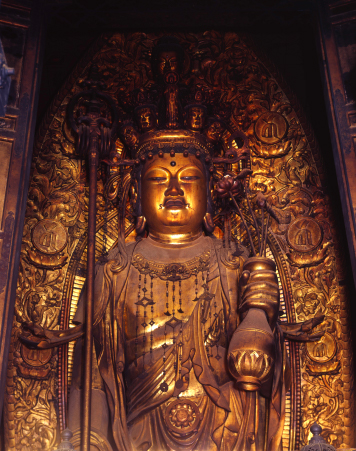
Eleven-Headed Kanzeon BosatsuImportant Cultural Property
This golden-shining Eleven-Headed Kanzeon has such a compassionate facial expression.
With ten smaller heads on its head, her eye with infinite compassion will let people pray naturally.
While this Kannon holds a vase in the left hand, which is a typical personal possession of Kannon, its holds a tin cane and prayer beads in the right hand like Jizo Bosatsu.
Therefore, it is said that this Kannon possesses the virtues of both Kannon and Jizo.
Since ancient times, it has been deeply worshipped as a Buddha who bestows benefits for the present world.
After suffering repeated fires, the current statue was rebuilt in 1538.
As the largest wooden statue of the Kannon in Japan, it continues to be revered by people today and in the past.
Height: 10.18 meters, Important Cultural Property.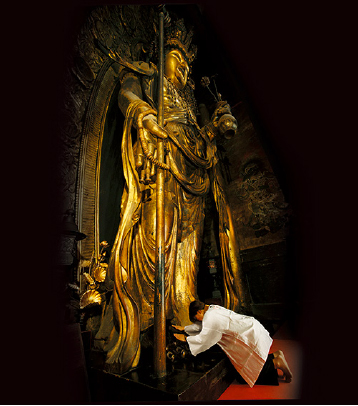
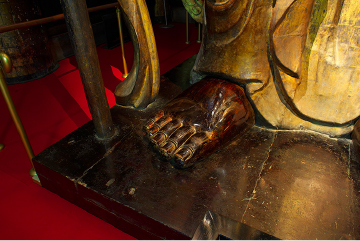
Sacred Feet of the Kannon
The huge main image of the Eleven-Headed Kannon enshrined in the inner sanctuary usually allows people to view only the upper half of the body, however, during the Special Opening periods held in spring and autumn, visitors can enter the inner sanctuary and can touch the feet of the Kannon and can feel the connection with it.
You will see that the gold leaf has been peeled off from the feet and the feet look shiny black which attests the fact that the Kannon has accepted people's wishes for hundreds of years. -
National Treasure
Main Hall (Daihi-kaku)
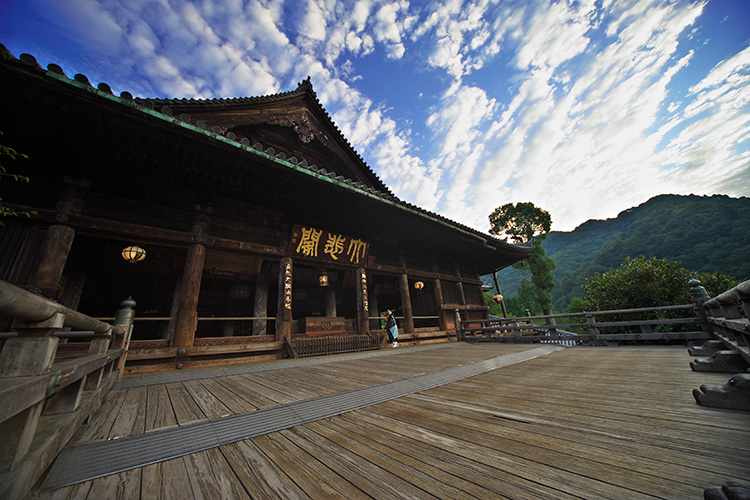
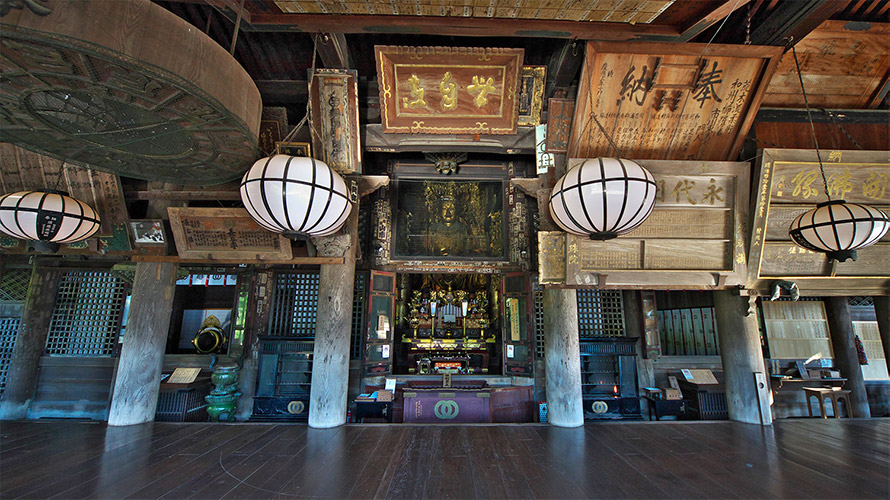
Main Hall (Daihi-kaku) National Treasure
The main hall housing the main image of the Eleven-Headed Kannon was reconstructed by the 3rd shogun, Tokugawa Iemitsu.
This magnificent building was designated as a National Treasure in December, 2004 and has a platform projecting out from the cliff and provides spectacular views. -
Young Monks
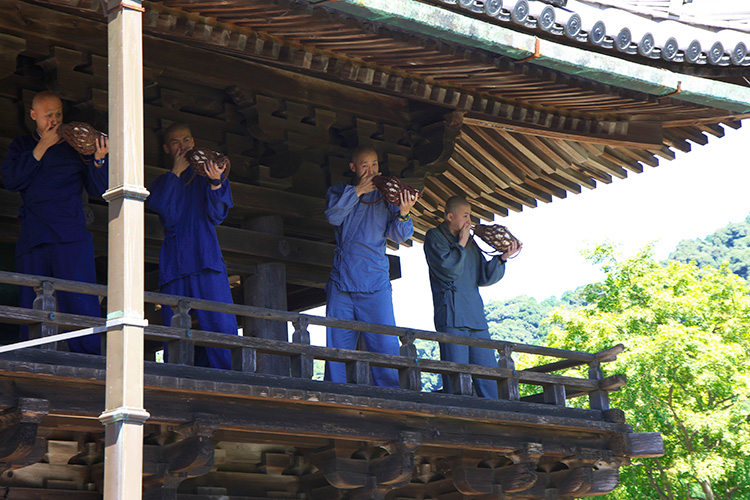
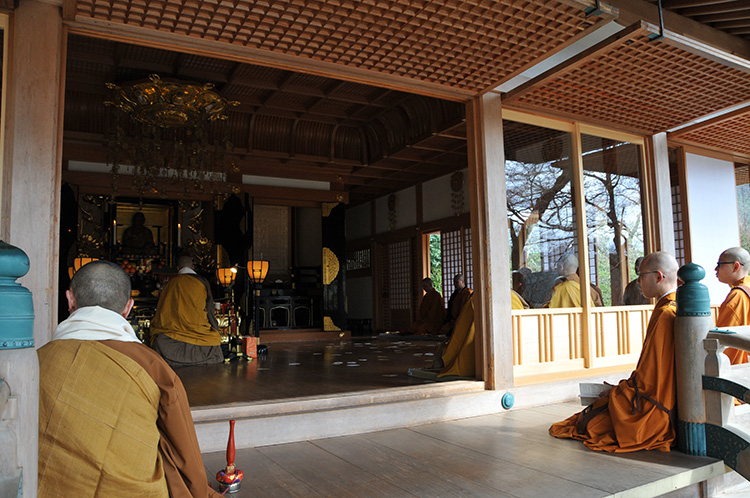
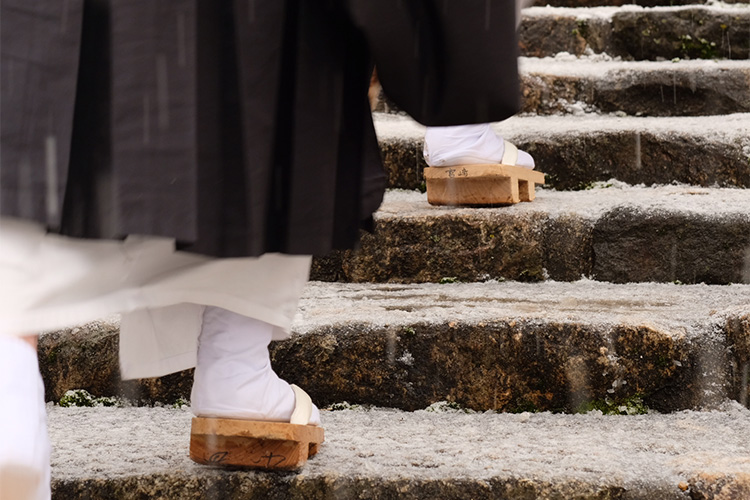
Young Monks
Hasedera temple is a monastery where young trainees learn religious studies, and train their sprits every day.
From 5:00 a.m. until lights out at 10:00 p.m., many monks are engaged in rigorous ascetic practices. -
Important Cultural Property
Noboriro (Roofed Stairs)
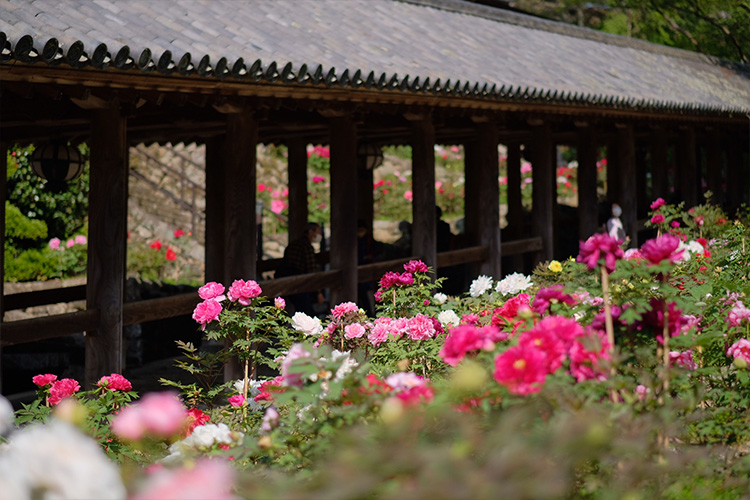
Noboriro (Roofed Stairs)Important Cultural Property
Noboriro, or roofed stairs, is situated on the steep slope from the Nio-mon Gate to the main hall.
The elegant stairs have 399 stone steps and hanging oval-shaped lanterns on the ceiling.
From the late April to the early May, the stairs are surrounded by beautiful peony flowers.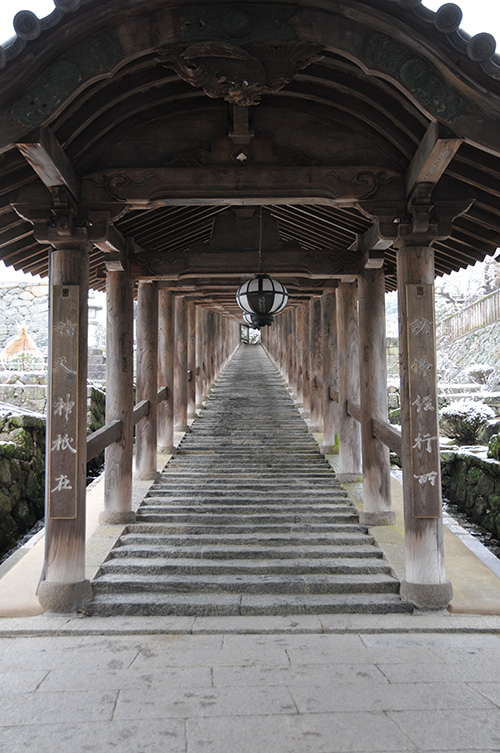
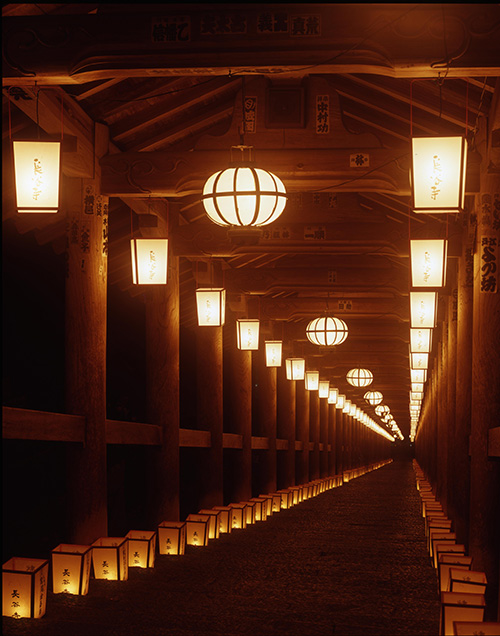
-
Seasonal Flowers
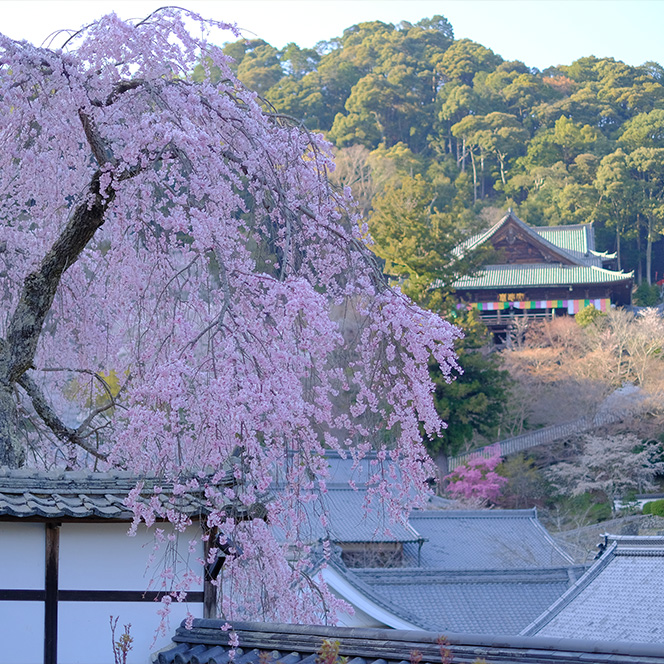
April:Cherry blossoms 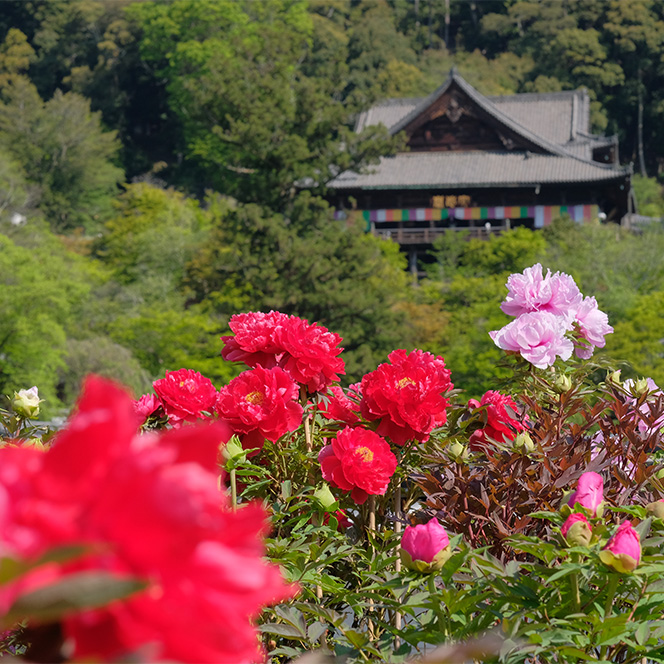
May: Peonies 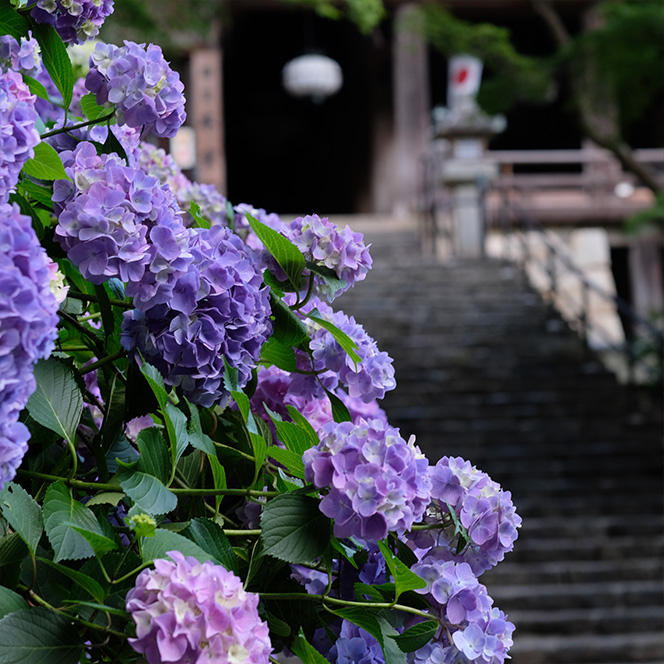
June:Japanese hydrangeas 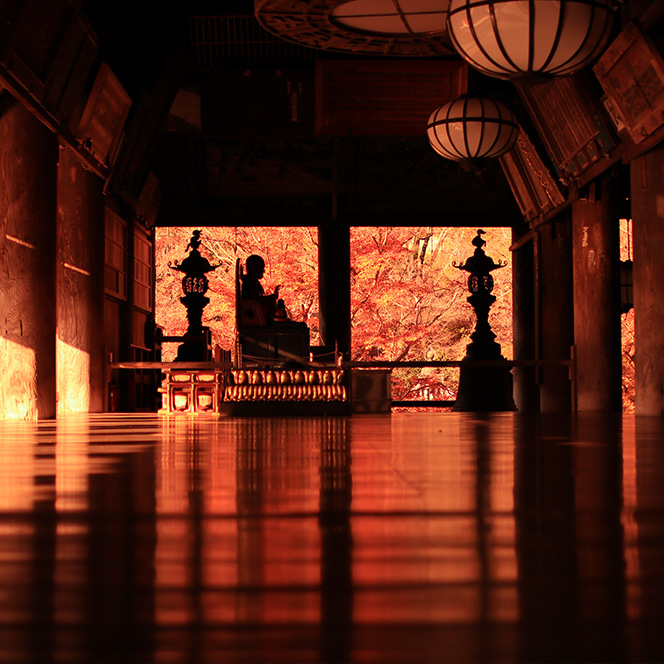
November:Maples 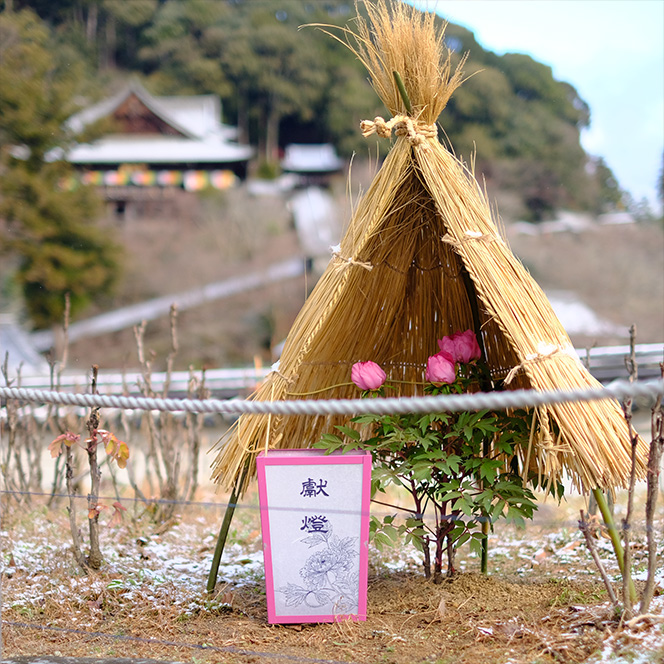
January:Winter peonies -
Five-storied Pagoda
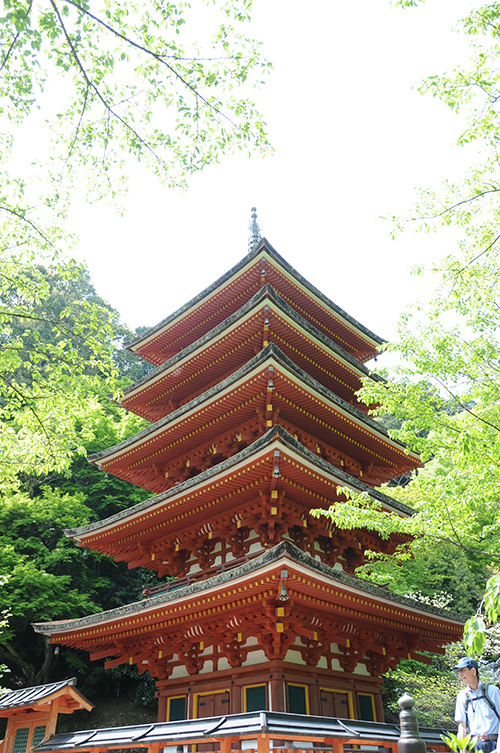
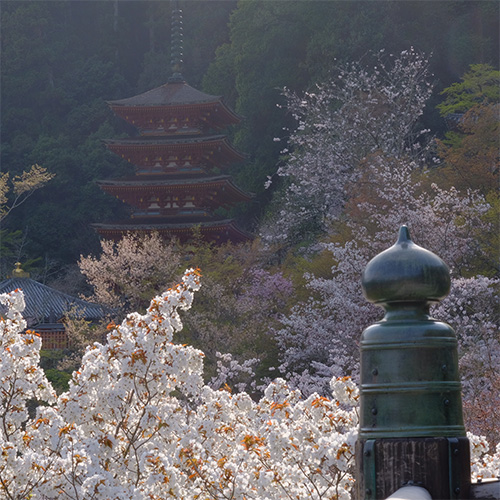
Five-storied Pagoda
The five-storied pagoda, built in 1954, was the first pagoda constructed after World War II.
It is praised for its beauty and called the “One of the most excellent pagodas of the Showa Period.”
In 1876, the three-storied pagoda was destroyed by fire due to lightning, and the pagoda was rebuilt as a five-story pagoda more than 70 years later. -
Traditional Event “Dadaoshi”
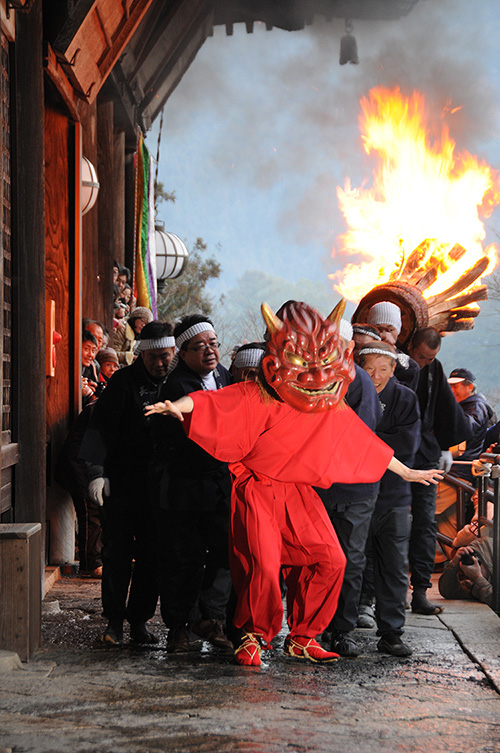
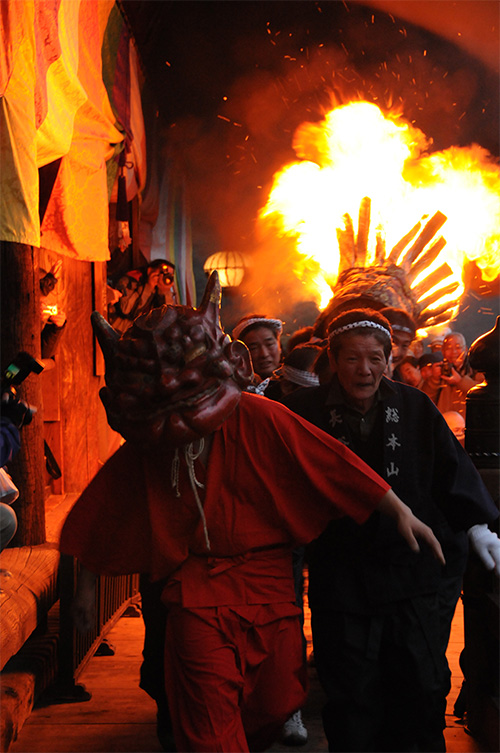
Traditional Event “Dadaoshi”
“Dadaoshi” – the ritual telling the arrival of spring
A ritual called “Shunie” is held from the 8th to the 14th of February every year, and “Dadaoshi” is a fire ceremony which held on the last day of Shunie.
Three giant goblins holding huge fire touches run in and out of the main hall.
Visitors exclaim in excitement when the 4-meter tall fire touches hit one another and the sparks shoot up into the air.
The fire ritual grants prayers for prosperity and health for a year. -
Important Cultural Property
Nio-mon Gate
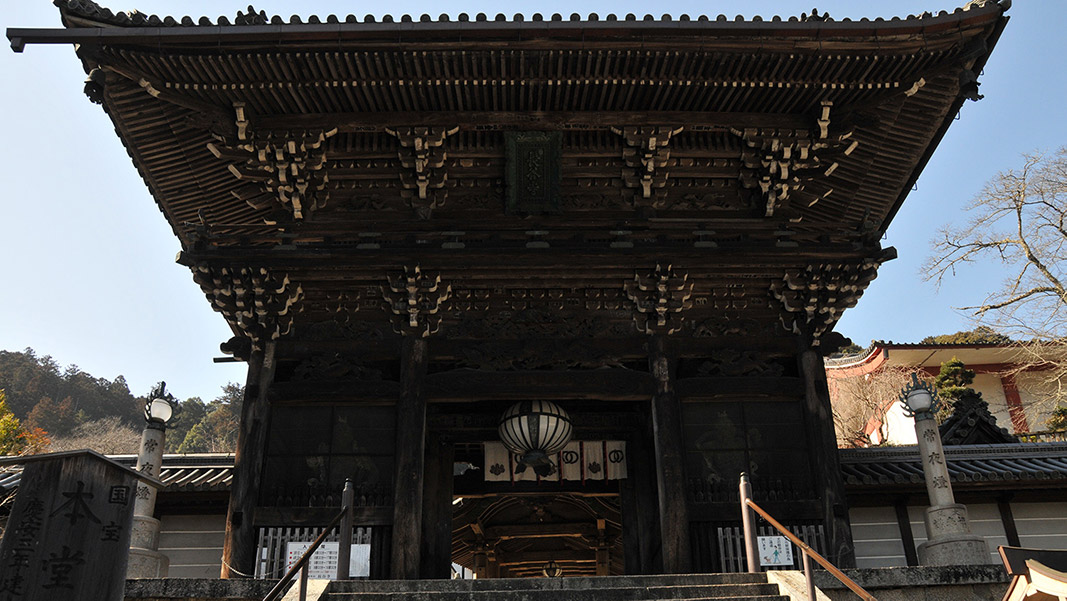
Nio-mon GateImportant Cultural Property
Nio-mon Gate is the main gate of Hasedera Temple.
A pair of Kongo Rikishi (Nio) stand on both sides of the gate as the guardians.
Nio guardians with fierce expressions and holding a tool of the esoteric Buddhism in their hands protect the world of Buddhism.
One has his mouth opened (A-sound shape) and the other has his mouth closed (Un-sound shape).
The present Nio-mon Gate was rebuilt in 1894.
Important Cultural Property -
The Faith of Kannon
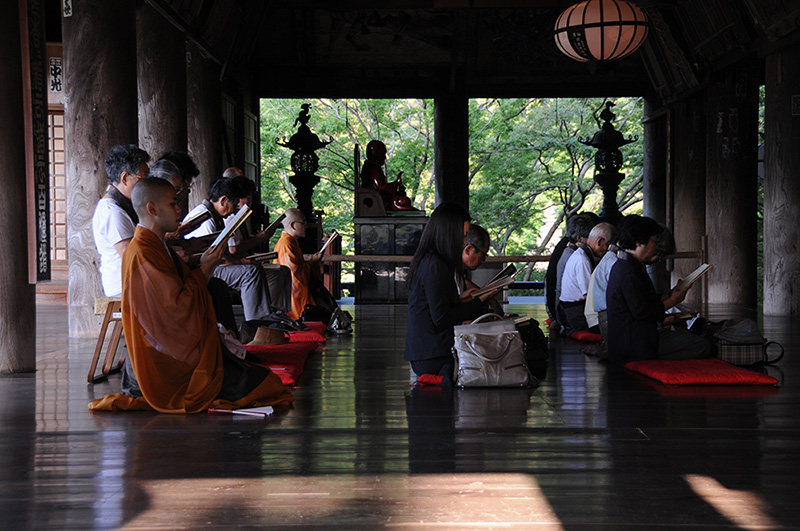
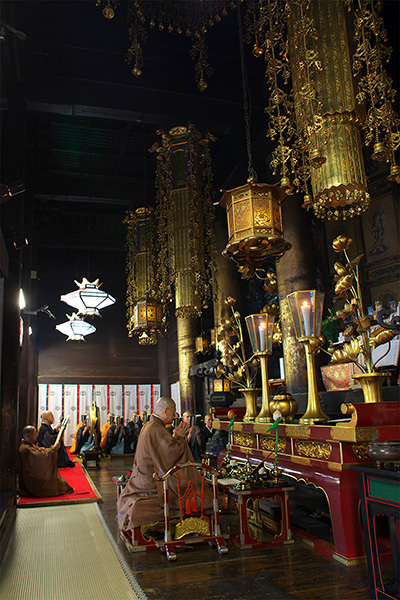
The Faith of Kannon (bodhisattva)
Japanese pilgrimage originated in Hasedera temple.
The founder of Hasedera temple, a priest Tokudo Shonin (656-735), met the Lord of Death in his dream while he was nearly dying due to a severe illness.
In his dream the Load of Death did not allow him to die and ordered him to set up the Kannon Pilgrimage to 33 Sites and let him return to this world.
This is the origin of the oldest pilgrimage in Japan.
Since then many pilgrims have visited Hasedera Temple and offered prayers to Kannon.
Cultural Assets
-
Main Hall
- Category
- National Treasure (building structure)
- Era
- Early Edo period (1650)
- Outline
- The main hall of the temple is representative of the large-scale construction by the Tokugawa Shogunate. It was designated as a National Treasure because the hall played an important role in the prevailing of the Kannon (Avalokiteshvara) belief in Japan. It is a large building of kake-zukuri (or butai-zukuri), erecting structures leaning against mountains or cliffs or projecting over valleys or rivers. The large hall is more than 16 meters each in width and depth, and the roof style is called hon-kawarabuki (round and flat tiles piled alternately). The hall has a structure called Sodo which merges Seido hall (inner area: a sacred place where the deity or principal image is enshrined) and the Raido hall (outer area: a place for public worship) are combined with a stone-paved dirt floor (place of worship) in between.
-
Wooden Standing Juichimen Kannon (Eleven-Headed Kannon <Ekadashamukha>) ((Enshrined in the main hall))
- Category
- Important Cultural Property (sculpture)
- Era
- Muromachi period (1538)
- Outline
- A wooden, lacquered and foiled Buddhist statue, 1018 cm in height. It is the largest wooden sculpture among those designated as National Treasures or Important Cultural Properties. Standing on a square base with a tin cane in its right hand, the statue is called the Hase-style Kannon (Avalokiteshvar). The figure emanates dignity as the fundamental image of the Hase belief that has prevailed throughout the country.
-
Standing Uho Doji(Buddha’s Attendant)
- Category
- Important Cultural Property (sculpture)
- Era
- Muromachi period (1538)
- Outline
- Wooden, 178.1 cm high, standing to the left of the main image. This statue is one of the Eight Great Dojis (followers of Bodhisattvas) who protect Mt. Hase. It is also worshipped as Amaterasu Omikami (the goddess of the sun).
-
Standing Nanda Ryu-o
- Category
- Important Cultural Property (sculpture)
- Era
- Kamakura period (1316)
- Outline
- Wooden, 213.0 cm high, standing to the right of the main image. One of the Eight Great Ryu-o (Dragon Kings) who appeared in this world in a temporary form when the principal image was created. It is also worshipped as Kasuga Daimyojin.
-
Nobori-ro(Climbing Corridor)
Tsunagi-ro (connecting corridor), Bell Tower, Sanbyaku Yosha (a shrine hall in front of the Bell Tower), Kami Nobori-ro (upper climbing corridor), Naka Nobori-ro (middle climbing corridor), Shimo Nobori-do (lower climbing corridor), Zao-do Hall, Tsunagiya (connecting hall)
- Category
- Important Cultural Property (building structure)
- Era
- Early Edo period (1650), Meiji period (1894)
- Outline
- The Nobori-ro (climbing corridor) leading to the main hall is a covered stairway consisting of Kami Nobori-ro (upper climbing corridor), Zao-do Hall, Naka Nobori-ro (middle climbing corridor), Tsunagiya (the connection hall between the lower and middle corridors), and Shimo Nobori-ro (lower climbing corridor). It has 399 stone steps and a length of approx. 200 meters. It is said that this path was climbed by Sugawara Michizane and is said to become the present form in 1039 thanks to the spiritual blessing of Kannon (Avalokiteshvar). The present Kami Nobori-ro and Tsunagi-ro (connecting corridor) were built in 1650, the same year as the main hall, while the Naka Nobori-ro and Shimo Nobori-ro corridors were rebuilt in 1894 due to a fire.
-
Niomon Gate
- Category
- Important Cultural Property (building structure)
- Era
- Meiji period (1894)
- Outline
- Statues of the deity Nio (guardian) stand on the both sides of the gate. On the upper part of the gate is enshrined the Shaka Triad accompanied by the Sixteen Rakan (arhat, the disciples of Buddha). The current Niomon Gate was rebuilt in 1894.
-
Hasedera Temple Hombo
Daikodo (Great Lecture Hall), Ogenkan (Main Entrance) and Kuri (Kitchen and Administrative Quarters), Okushoin, Kojoin, Gomado Hall, Karamon Gate and Corridor, Chujakumon Gate, Earthen Storage
- Category
- Important Cultural Property (building structure)
- Era
- Taisho period (1924)
- Outline
- Honbo was built in 1667, during the reign of Shogun Tokugawa Ietsuna, with a donation. Later it was burnt down in 1911 and the current building was rebuilt in 1924. It is a group of modern Japanese-style buildings (an architectural style based on the Japanese design seen in Japan after the Meiji period) that uses original new designs in various parts.
GUIDE / ACCESS
| Opening Hours: | April-September: 8:30 a.m.-5:00 p.m., October-November, March: 9:00 a.m.-5:00 p.m., December-February: 9:00 a.m.-4:30 p.m. *Opening hours during the Peony Festival will be extended (The peony festival is held from the late April to early May) |
|---|---|
| Admission Fee: | Adults ¥500, Junior High/High School Students ¥500, Elementary School Students ¥250 |
| Address: | 731-1 Hase, Sakurai, Nara |
| Access: | A 15-min. walk from Kintetsu Hasedera Station |